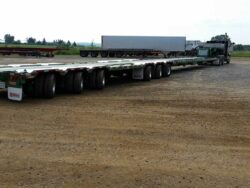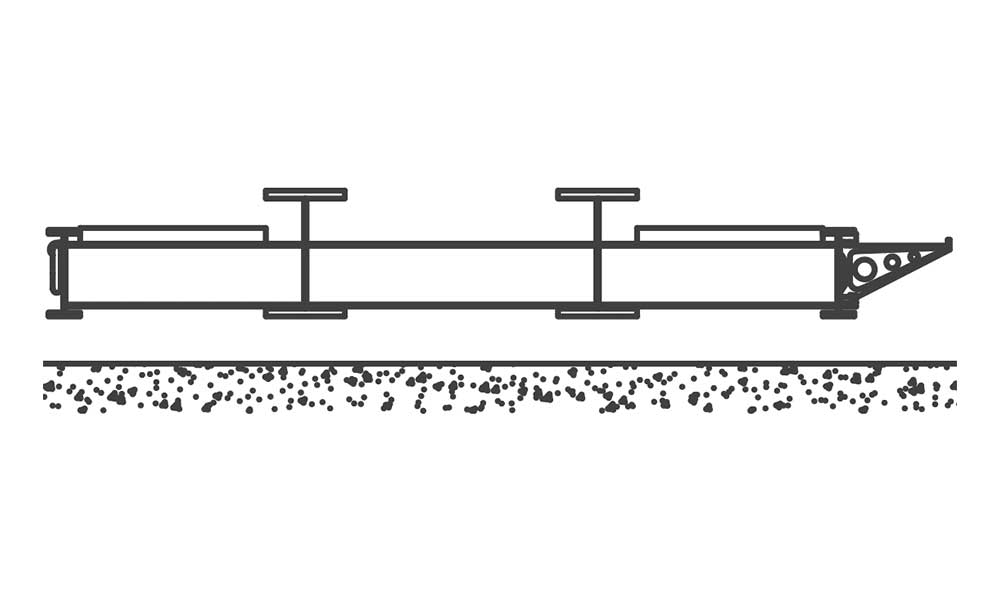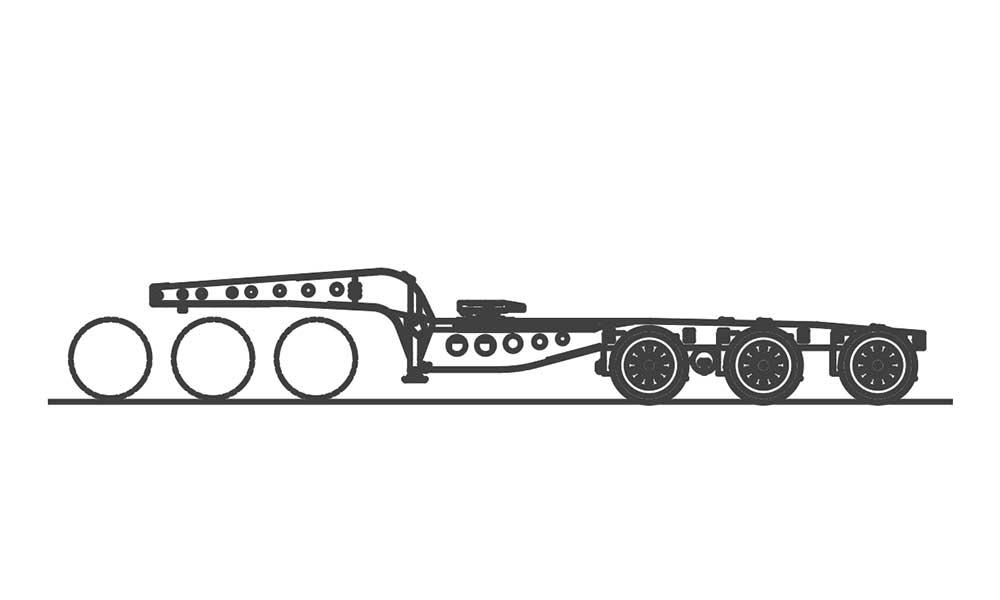The steerable railcar hauler is purposely built to haul large completed rail cars. These large loads drive each feature of this trailer. The long length and large inter-grouping spread make steering axles a must.
Loading & Unloading
The trailer can be accessed from the front or the back. Both loading ends require additional ramps to bridge the gap between the trailer’s rails and the ground rails. If the load is accessed from the back, the hydraulic gooseneck is designed to lift the front of the trailer to reduce the angle difference between the trailer and ramp rails. Front loading is done by laying the deck down onto the ground and detaching the gooseneck. This naturally creates a shallow angle to unload the car.
In both cases, the winch in the gooseneck can be used to either pull the rail car onto the trailer or guide it down.
Return configuration
To keep the overall length to 53 ft, the deck insert can be removed and stacked onto the bogie system. This trailer can self-load its own deck section with the hydraulic gooseneck, deck landing gear and rail wheel. This feature dramatically reduces operating overhead as there is no need for lifting equipment on-site to perform this operation.










